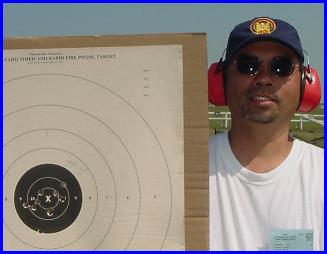
Greetings Shooters,
"I need to shoot at 50 yards and fly a jetliner as my occupation so why does my eye doctor tests my eyes at 20 feet?" "My eyes were tested at 20 feet but wouldn't I see with better eyeglasses if I was tested at 1,000 yards." "I see great with my new eyeglasses even though I was tested in a small exam room, how can that be?" These are, of course, hypothetical questions which may have been lurking in the back of our minds but we didn't think of asking our eye doctors.
I briefly discussed this topic with shooters recently and I thought there may be some interest to expand it further. The discussion was centered upon that 20 feet was considered "Optical Infinity." In other words, our eyes focus the same at 20 feet as compared to the horizon. This is true and false depending on how critical we would like to evaluate this situation. We had a few comments that focus seemed different at 50 feet, 25 yards and 50 yards. There is, in fact, a dioptric value differential in the focus at 20 feet versus out to the horizon. This value is a fraction of a diopter and the typical human eye may not be able to detect any difference in focus and this small power is not available in prescription lenses. If a "stronger" lens is placed in front of the eyes, vision will not become clearer but rather worse, once the best prescription lenses have been determined.
Here are some other points to consider. Probably the most striking perception of different distances is from our use of depth perception with our binocular vision. Each eye sees a different angle of the object and our brain interprets how far the object is located. We tend to loose this ability to differentiate distances when one eye is covered. Pupil size will definitely have an affect on our perceived clarity at 20 feet and 1,000 yards due to depth of focus. Pupil size may be a function of age, "Night Myopia" and use of certain medications.
From a practical standpoint, exam room settings typically involves mirrors to obtain a projected eye chart at 20 feet. This method has been used by Optometrists and Ophthalmologists for years and will not likely change in the future. The best minds in Medicine and Optics would have considered a better option if it was considered necessary.
Good Vision and Good Shooting To All,
Norman H. Wong, O.D.
